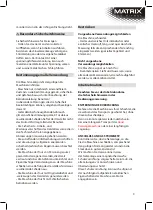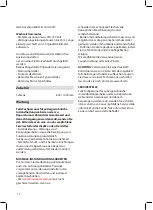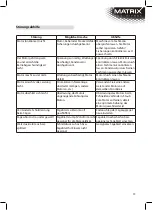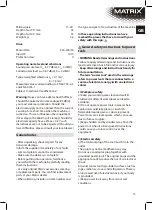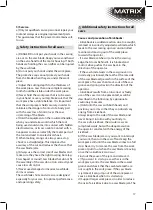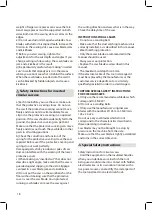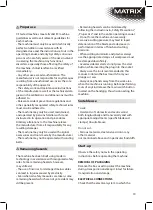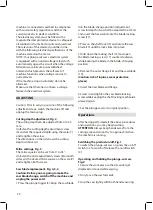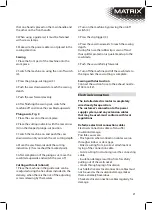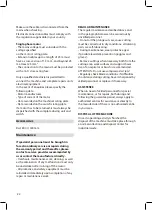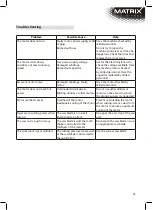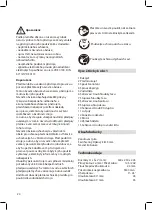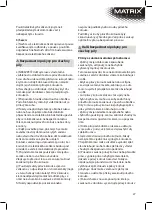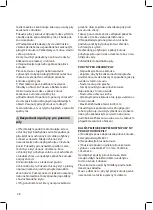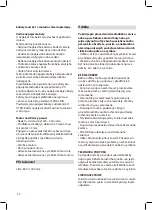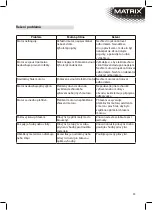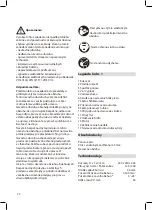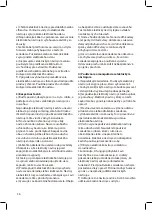
21
that one hand is placed on the main handle and
the other on the front handle.
4 When using a guide rail, it must be fastened
with screw clamps.
5 Make sure the power cable is not placed in the
sawing direction.
Sawing
1 Place the front part of the machine onto the
work piece.
2 Switch the machine on using the on/off switch
(4).
3 Press the plunge-cut trigger (3).
4 Push the saw downwards to reach the sawing
depth.
5 Push the saw forward evenly.
6 After finishing the sawing cut, switch the
machine off and move the saw blade upwards.
Plunge-cuts, Fig. 9
1 Place the saw onto the work piece.
2 Place the cutting indicator with the rear arrow
(A) on the deepest plunge-cut position.
3 Switch the machine on and push the saw
downwards until you reach the set cutting depth.
4 Move the saw forwards until the cutting
indication (C) has reached the marked point.
5 After completion of the plunge-cut, move the
saw blade upwards and switch the saw off.
Cutting with rails (otional)
1 Place the machine in the guide rails. can be
readjusted using the hex driver included in the
delivery, when there is the risk of the adjusting
screws releasing by themselves.
2 Turn on the machine by pressing the on/off
switch (4).
3 Press the dip trigger (3).
4 Press the saw downwards to reach the sawing
depth.
During first use the rubber lip is sawn off and
thus splitter protection is guaranteed up to the
saw blade.
5 Push the saw uniformly forwards.
6 Turn off the machine and tilt the saw blade to
the top when the saw cutting is complete.
Sawing with dust suction
Connect the suction hose to the exhaust nozzle -
Ø 38 mm (12).
Electrical connection
The installed electric motor is completely
wired ready for operation.
The customer’s connection to the power
supply system, and any extension cables
that may be used, must conform with local
regulations.
Defective electrical connection cables
Electrical connection cables often suffer
insulation damage.
Possible causes are:
• Pinch points when connection cables are run
through window or door gaps.
• Kinks resulting from incorrect attachment or
laying of the connection cable.
• Cuts resulting from running over the connecting
cable.
• Insulation damage resulting from forcefully
pulling out of the wall socket.
• Cracks through aging of insulation.
Such defective electrical connection cables must
not be used as the insulation damage makes
them extremely hazardous.
Check electrical connection cables regularly for
damage.
Summary of Contents for PS 1000-45
Page 2: ...2...



